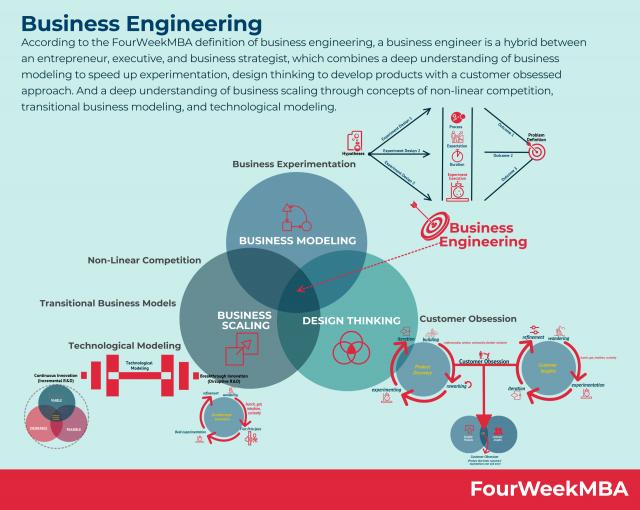The concept of user Innovation gained prominence in the late 20th century as researchers recognized the significant role that end-users play in driving innovation. User innovation challenges the traditional model of innovation, which often centers around firms and professional designers as the primary sources of new ideas and technologies. Instead, user innovation emphasizes the creativity, expertise, and motivation of individuals outside formal organizational settings.
Related Articles
Key Concepts:
Several key concepts underpin user innovation:
- Lead User: Lead users are individuals or groups who experience needs or problems ahead of the general market and are highly motivated to find solutions. Lead users often develop innovative solutions that address their unique needs, providing valuable insights and inspiration for broader innovation efforts.
- User Communities: User communities are networks of individuals who share common interests, experiences, or goals related to a particular product, service, or domain. User communities facilitate collaboration, knowledge sharing, and collective problem-solving among members, fostering innovation from the grassroots level.
- Prosumerism: Prosumerism refers to the blurring of boundaries between producers and consumers, whereby individuals actively participate in the co-creation of value. Prosumers engage in activities such as customization, co-design, and peer-to-peer sharing, contributing to the innovation process through their active involvement.
Processes:
User innovation involves several processes:
- Need Identification: User innovation begins with the identification of unmet needs, problems, or opportunities by end-users. Users draw on their firsthand experiences and insights to identify areas where existing products or services fall short or could be improved.
- Solution Development: Once needs are identified, users engage in solution development processes to address them. This may involve modifying existing products, repurposing available resources, or developing entirely new solutions from scratch.
- Testing and Iteration: Users test and refine their innovations through iterative cycles of experimentation, feedback, and iteration. This iterative process enables users to fine-tune their solutions, incorporate user feedback, and ensure that the final product meets their needs and expectations.
Collaborative Frameworks:
Various collaborative frameworks support user innovation:
- Open Innovation: Open innovation involves leveraging external sources of knowledge, expertise, and resources to complement internal innovation efforts. Open innovation platforms, hackathons, and crowdsourcing initiatives engage users in collaborative innovation processes, tapping into the collective intelligence of diverse stakeholders.
- User-Centric Design: User-centric design approaches such as design thinking and participatory design prioritize the needs, preferences, and experiences of end-users throughout the innovation process. By involving users in co-design activities, organizations can create products and services that better meet user needs and preferences.
- Innovation Ecosystems: Innovation ecosystems encompass a network of actors, including firms, universities, governments, and user communities, that collaborate to foster innovation. Innovation ecosystems provide the infrastructure, resources, and support necessary to facilitate user innovation and translate user-generated ideas into marketable products and services.
Implications and Challenges:
User innovation presents several implications and challenges:
- Market Disruption: User innovation has the potential to disrupt established markets and industries by introducing novel solutions that meet unmet user needs or preferences. Incumbent firms may face challenges in adapting to user-generated innovations and maintaining their competitive advantage.
- Intellectual Property: Intellectual property rights pose challenges in user innovation, particularly regarding ownership, protection, and commercialization of user-generated innovations. Balancing the interests of users, innovators, and firms in intellectual property regimes is essential for fostering innovation while ensuring fair and equitable access to innovation outcomes.
- Sustainability: User innovation can contribute to sustainable development by addressing pressing societal challenges such as environmental sustainability, healthcare access, and social equity. Leveraging user-generated solutions to tackle these challenges requires collaboration, investment, and supportive policy frameworks.
Contemporary Relevance and Future Directions:
In today’s interconnected and rapidly changing world, the relevance of user innovation is increasingly recognized:
- Digital Platforms: Digital platforms and online communities provide fertile grounds for user innovation, enabling users to collaborate, share knowledge, and co-create solutions across geographic and disciplinary boundaries. Crowdfunding platforms, maker spaces, and online forums facilitate user-driven innovation initiatives and support grassroots entrepreneurship.
- Industry 4.0: Industry 4.0 technologies such as additive manufacturing, Internet of Things (IoT), and artificial intelligence (AI) empower users to design, prototype, and manufacture custom solutions at scale. User-driven innovation ecosystems are emerging, leveraging digital technologies to democratize innovation and foster user-led entrepreneurship.
- Policy Innovation: Policymakers are increasingly recognizing the importance of user innovation in driving economic growth, social inclusion, and sustainable development. Policy initiatives such as open innovation strategies, user-centered design standards, and innovation procurement programs support user-driven innovation and create enabling environments for user innovators.
Conclusion:
User innovation represents a paradigm shift in how innovation is conceptualized, practiced, and valued. By recognizing the creativity, expertise, and motivation of end-users, organizations and policymakers can tap into a rich source of ideas, insights, and solutions that address pressing societal challenges and drive economic prosperity.
Read Next: Business Model Innovation, Business Models.
Related Innovation Frameworks
Business Engineering
Business Model Innovation
Innovation Theory
Types of Innovation
Continuous Innovation
Disruptive Innovation
Business Competition
Technological Modeling
Diffusion of Innovation
Frugal Innovation
Constructive Disruption
Growth Matrix
Innovation Funnel
Idea Generation
Design Thinking
The post User Innovation appeared first on FourWeekMBA.

